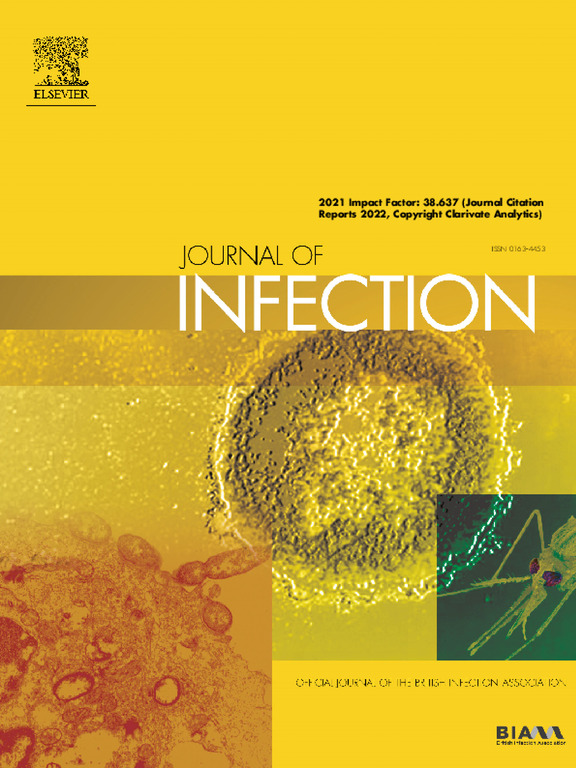呼吸道病毒的时空动态和病毒干扰:来自中国多病原体监测的见解。
IF 11.9
1区 医学
Q1 INFECTIOUS DISEASES
引用次数: 0
摘要
背景:很明显,呼吸道病毒表现出明显的时空传播模式,严重急性呼吸综合征(SARS-CoV-2)深刻地改变了这些病原体的动态。病毒的干扰使监测变得更加复杂。本研究旨在研究大流行后时代呼吸道病毒的时空传播模式,并评估病毒相互作用对病毒爆发的影响。方法:自2021年起在浙江省台州市开展多病原体监测规划。该研究利用时空模型分析了四种呼吸道病毒,即SARS-CoV-2、流感病毒、人鼻病毒(HRV)和呼吸道合胞病毒(RSV),目的是确定相互作用模式及其滞后效应。结果:每种病毒都不同程度地受到经济和交通相关因素的影响。即使在调整了时空变量和基线因素之后,不同病毒之间也观察到显著的相互作用。这些交互并不总是双向的,并且表现出特定的模式和延迟时间。RSV暴发受HRV影响,但反之则不然。SARS-CoV-2对流感的影响在12周后显现,而流感对SARS-CoV-2的影响仅滞后1周。病毒之间潜在的竞争关系在其空间分布上也很明显,例如流感和HRV的高流行区和低流行区几乎相反。此外,多种病原体的共存导致病毒扩散模式和流行持续时间的实质性改变。结论:本研究将多病原体监测与时空建模相结合,证实了由人群水平发病率数据得出的病毒干扰关系与实验结果一致,从而揭示了SARS-CoV-2与其他病毒之间潜在的相互作用。我们的研究结果证实,SARS-CoV-2改变了呼吸道病毒的传播模式,并强调了病毒相互作用在形成流行动态中的关键作用。本文章由计算机程序翻译,如有差异,请以英文原文为准。
Spatial-temporal dynamics and virus interference of respiratory viruses: Insights from multi-pathogen surveillance in China
Background
It is evident that respiratory viruses exhibit a discernible spatial and temporal transmission pattern, and severe acute respiratory syndrome (SARS-CoV-2) has profoundly altered the dynamics of these pathogens. The viral interference has led to greater complexity in the surveillance. This study aims to examine the spatiotemporal transmission patterns of respiratory viruses in the post-pandemic era and assess the impact of virus interactions on virus outbreaks.
Methods
A multi-pathogen surveillance program was conducted in Taizhou, Zhejiang Province, commencing in 2021. The study utilized spatial-temporal modeling to analyze four respiratory viruses, namely SARS-CoV-2, influenza, human rhinovirus (HRV) and respiratory syncytial virus (RSV), with the objective of identifying interaction patterns and their lagged effects.
Results
Each virus is influenced to varying degrees by economic and traffic-related factors. Even after adjusting for spatiotemporal variables and baseline factors, significant interactions were observed between different viruses. These interactions were not always bidirectional and demonstrated specific patterns and lag times. RSV outbreaks are influenced by HRV, but the converse is not true. The effect of SARS-CoV-2 on influenza manifested 12 weeks later, whereas influenza affected SARS-CoV-2 with only 1-week lag. Potential competitive relationships between viruses were also evident in their spatial distribution, such as the nearly opposite high- and low-prevalence areas of influenza and HRV. Furthermore, the coexistence of multiple pathogens resulted in substantial alterations to virus diffusion patterns and epidemic duration.
Conclusions
This study integrates multi-pathogen surveillance with spatiotemporal modeling, confirming that the viral interference relationships derived from population-level incidence data are consistent with experimental findings, thereby revealing potential interactions between SARS-CoV-2 and other viruses. Our findings confirm that SARS-CoV-2 has altered transmission patterns of respiratory viruses and highlight the critical role of viral interactions in shaping epidemic dynamics.
求助全文
通过发布文献求助,成功后即可免费获取论文全文。
去求助
来源期刊

Journal of Infection
医学-传染病学
CiteScore
45.90
自引率
3.20%
发文量
475
审稿时长
16 days
期刊介绍:
The Journal of Infection publishes original papers on all aspects of infection - clinical, microbiological and epidemiological. The Journal seeks to bring together knowledge from all specialties involved in infection research and clinical practice, and present the best work in the ever-changing field of infection.
Each issue brings you Editorials that describe current or controversial topics of interest, high quality Reviews to keep you in touch with the latest developments in specific fields of interest, an Epidemiology section reporting studies in the hospital and the general community, and a lively correspondence section.
 求助内容:
求助内容: 应助结果提醒方式:
应助结果提醒方式:


